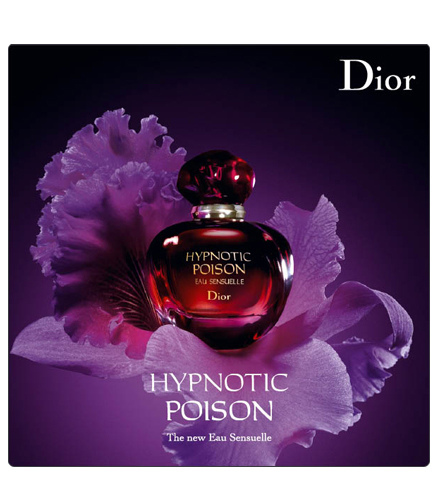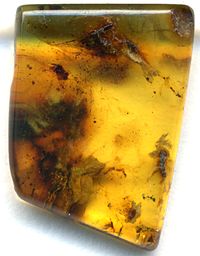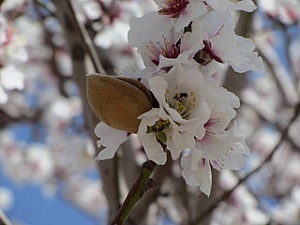Hypnotic Poison Perfume
Women's Fragrance
Hypnotic Poison perfume: A Christian Dior fragrance launched in 1998. Oriental and spicy women's fragrance. A unique women cologne.
Aroma Notes: Jasmine, Amber, Almond and Woods.
Jasmine
Jasmine is considered an absolute and not an essential oil as the petals of the flower are much too delicate and would be destroyed by the distillation process used in creating essential oils. Other than the processing method it is essentially the same as an essential oil. Absolute is a technical term used to denote the process of extraction. It is in common use.
Its flowers are either extracted by the labor-intensive method of enfleurage or through chemical extraction. It is expensive due to the large number of flowers needed to produce a small amount of oil. The flowers have to be gathered at night because the odor of jasmine is more powerful after dark. The flowers are laid out on cotton cloths soaked in olive oil for several days and then extracted leaving the true jasmine essence.
Some of the countries producing jasmine essential oil are India, Egypt, China and Morocco. Jasmine scent has been reported to have sedative properties. Many species also yield an absolute, which is used in Hypnotic Poison perfume/perfumery and incense.
Amber
Amber is fossilized tree resin (not sap), which has been appreciated for its color and natural beauty since Neolithic times. Much valued from antiquity to the present as a gemstone, amber is made into a variety of decorative objects. Amber is used as an ingredient in women cologne/perfumes, as a healing agent in folk medicine, and as jewelry. "Amber" perfumes may be created using combinations of labdanum, benzoin resin, copal (itself a type of tree resin used in incense manufacture), vanilla, Dammara resin and/or synthetic materials.
Labdanum is produced today mainly for the perfume industry. The raw resin is usually extracted by boiling the leaves and twigs. An absolute is also obtained by solvent extraction. An essential oil is produced by steam distillation.
The raw gum is a black (sometimes dark brown), fragrant mass containing up to 20% or more of water. It is plastic but not pourable, and becomes brittle with age. The absolute is dark amber-green and very thick at room temperature. The fragrance is more refined than the raw resin.
The odor is very rich, complex and tenacious. Labdanum is much valued in perfumery because of its resemblance to ambergris, which has been banned from use in many countries because its precursor originates from the sperm whale, which is an endangered species: although the best-quality ambergris is found free-floating or washed up onshore (long exposure to sunlight, air and water removes offensive-smelling components of the fresh substance), and thus raises no ethical objections, a lower-quality version can also be recovered from some fraction of freshly slaughtered whales, and so may encourage poaching of sperm whales.
Labdanum is the main ingredient used when making the scent of amber in Hypnotic Poison perfume/perfumery. Labdanum's odor is variously described as amber, animalic, sweet, woody, ambergris, dry musk, or leathery.
Almond and Hypnotic Poison Perfume
The almond is a species of tree native to the Middle East and South Asia. "Almond" is also the name of the edible and widely cultivated seed of this tree. Within the genus Prunus, it is classified with the peach in the subgenus Amygdalus, distinguished from the other subgenera by the corrugated shell (endocarp) surrounding the seed. The fruit of the almond is a drupe, consisting of an outer hull and a hard shell with the seed (which is not a true nut) inside.
Shelling almonds refers to removing the shell to reveal the seed. Almonds are sold shelled (i.e., after the shells are removed), or unshelled (i.e., with the shells still attached). Blanched almonds are shelled almonds that have been treated with hot water to soften the seed coat, which is then removed to reveal the white embryo. The almond is native to the Mediterranean climate region of the Middle East, eastward as far as the Indus. In India, it is known as badam.
It was spread by humans in ancient times along the shores of the Mediterranean into northern Africa and southern Europe and more recently transported to other parts of the world, notably California, United States. The bitter almond is slightly broader and shorter than the sweet almond, and contains about 50% of the fixed oil that occurs in sweet almonds. It also contains the enzyme emulsin which, in the presence of water, acts on soluble glucosides, amygdalin and prunasin, yielding glucose, cyanide and the essential oil of bitter almonds, which is nearly pure benzaldehyde and can be use in perfumery. Bitter almonds may yield from 4–9 mg of hydrogen cyanide per almond.
Extract of bitter almond was once used medicinally, but even in small doses, effects are severe, and in larger doses can be deadly; the cyanide must be removed before consumption.
Woods
Nerolidol, also known as peruviol, is a naturally occurring sesquiterpene found in the essential oils of many types of plants and flowers. There are two isomers of nerolidol, cis and trans, which differ in the geometry about the central double bond. Nerolidol is present in neroli, ginger, jasmine, lavender, tea tree, Cannabis Sativa, and lemon grass. The aroma of nerolidol is woody and reminiscent of fresh bark.
It is used as a scent agent and in Hypnotic Poison perfume/perfumery. It is also currently under testing as a skin penetration enhancer for the trans-dermal delivery of therapeutic drugs.
Home Page Hypnotic Poison Perfume>Back to Christian Dior the biography Perfume News




